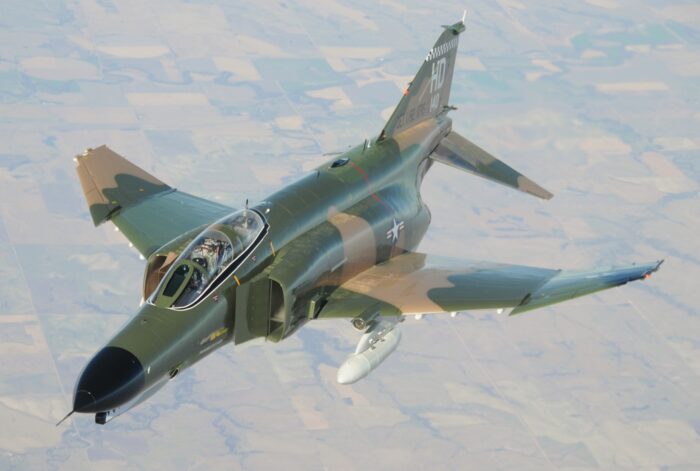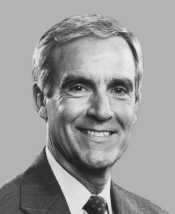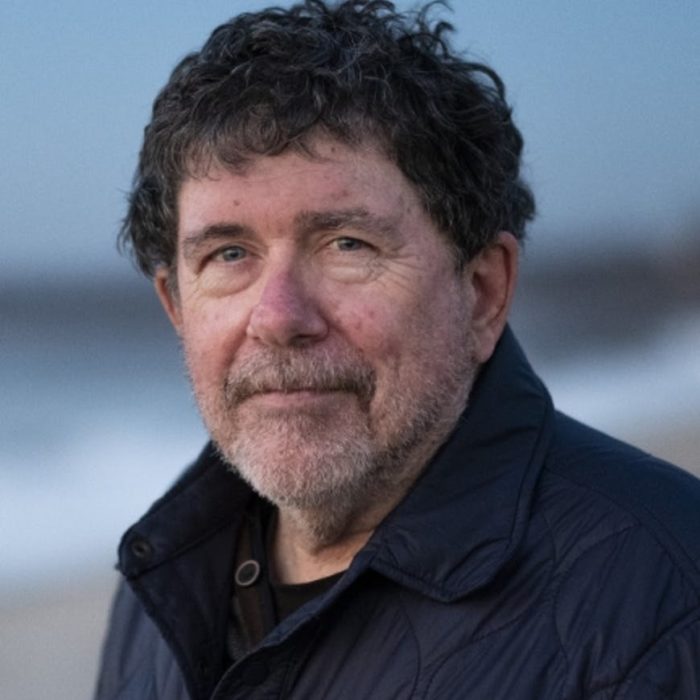dd
by Tom Clavin
Douglas “Pete” Peterson was born in Omaha and raised in Nebraska and Iowa. He enlisted in the U.S. Air Force in 1954, attaining flight pilot and instructor status soon after. He would have a 26-year military career, which included being stationed in Ubon, Thailand, during the Vietnam War. During that time, Peterson flew F-4C Phantom II fighter planes. Taking off in Thailand, almost always at night, and flying right across Laos and into North Vietnam, he bombed enemy transportation routes. He was what was known as a “Night Owl” fighter pilot.
At the time, a rotation lasted 100 missions. Four months into his tour, Peterson had already flown 66 missions and it was beginning to look like he might be home in time for Christmas. Then on September 10, 1966, Captain Peterson and co-pilot Lieutenant Bernard “Bunny” Talley took off to attack a bridge and ferry complex close to Hanoi. “Unfortunately, the weather was worse than forecast and we ended up getting into the clouds. We couldn’t see the missile coming,” Peterson later told an Australian journalist.

This image is in the public domain.
It almost tore their plane in two. With the rear portion engulfed in flames, Peterson and Talley ejected. Peterson fell into a mango tree. He was badly hurt, with head injuries, both knees dislocated, and a broken leg, arm, and shoulder. He ordered Talley to run and evade capture. Peterson took out his .38 pistol and thought seriously about killing himself. Instead, he threw it in a ditch.
He was caught by a group of villagers with one rifle between them, which they stuck in his mouth. They stripped him of his clothes, bound him, and dragged him back to their tiny village, An Doai. There, he was put on display like a hunting trophy. After a while, he was moved to another village, where he was interrogated, and then, still in his broken, untreated state, piled into the sidecar of a battered motorbike and paraded through countless other villages. Jeering, spitting crowds formed around the motorbike. “I was perfectly fair game for all the locals and they took their shots,” he recalled years later. “If you think about it, it’s quite a natural reaction after having been bombed for several years—they had their chance to get a little retribution.”
He was first taken into Hanoi, to the Hoa Lo prison—known to its American inmates as the Hanoi Hilton—and brutally interrogated. After four days, Peterson was finally transferred to a hospital, and from there, to a prison camp southwest of the city, known by U.S. prisoners as the “Zoo.” His cell had three air holes in the ceiling, a trap door through which food was passed, and a bunk which was planks of wood set on concrete pillars was the bed. Those concrete walls were to be Peterson’s north, south, east, and west for the next three-and-a-half years, with only fleeting breaks every few days to wash or empty his toilet bucket.
After that long stint in the Zoo, he was transferred to another prison, and then another and another. He recalled, “Initially, the idea is you’re going to go home in a couple of weeks. After a couple of Christmases go by you kind of wonder, well, maybe that plan isn’t going to work. And you then take on a mental state that essentially says: ‘This is it, this is your life. It’s not going to change.'”
Peterson engaged for hours on end in a sort of vivid daydreaming. It was more than a process of recalling his past life with his wife, Carlotta, and his children, or the one before that, on the small plot of land on the outskirts of Omaha, where he grew up with nine brothers and sisters. He also went through items on a mental bucket list of places he had longed to go to and things he had planned to do. He didn’t know who was elected president in 1968 and 1972 or that a man had set foot on the moon. He missed six-plus years of his children’s lives.

Soon after a peace accord was signed, he was released, on March 4, 1973. Peterson returned home and resumed his military service until 1981, when he retired at the rank of full colonel. He then became a businessman and formed his own general contracting firm in Tampa, Florida. In 1985, he joined the faculty of Florida State University as the director of the Specialized Treatment Program in the Psychology Department. Following an attempt by Florida state officials to close the Dozier School for Boys in 1989, he fought a successful battle to keep funding for the school. This fight inspired Peterson to run for the U.S. Congress. Running as a Democrat, he won this battle too and served three terms in the House of Representatives.
Now comes the reconciliation part. In 1997, Peterson was asked by President Bill Clinton to become the United States’ first post-war ambassador to Vietnam. After some persuading and soul-searching, he accepted.
To his surprise, he was welcomed with open arms. The former LA Times journalist David Lamb, in his book Vietnam Now: A Reporter Returns, says that during four years in Vietnam, Peterson became “a walking billboard for reconciliation.” Lamb says Peterson was so popular that Vietnamese people would often stop him on the street to have their picture taken with him. He got his hair cut for 50 cents from a local barber, ate noodle broth like a local, and on his free days took off into the countryside on a Honda moped.
A special moment came four months after he took up his post. On September 10, 1997, Peterson revisited An Doai, the village where he had been taken prisoner. He drank tea with Nguyen Viet Chop and Nguyen Danh Xinh, two of the men who had dragged him back to the village through the rice paddies. And he walked through the fields, holding hands with the grandson of one of his former captors, to the mango tree into which he had fallen 31 years earlier. “I return here not to re-live what was probably the most unhappy day of my life,” Ambassador Peterson said, “but to signify to the entire world that reconciliation is not only possible but absolutely the way to reach out.”
On November 17, 2000, he was presented with the Presidential Citizens Medal by President Clinton. When George W. Bush became president, he reappointed Peterson as Ambassador to Vietnam for an indefinite term, but after six more months in Hanoi, he decided it was time to go home.
Since retiring, Peterson founded the Alliance for Safe Children, which aims to lower preventable injuries to children worldwide, and focuses specifically on such issues as drowning in Asia. With his wife, he started a company whose aim it was to promote American business in Southeast Asia. Peterson’s first wife had died in 1995. Two weeks after his installation in Hanoi, he met Vi Le, Australia’s senior trade commissioner, born in Vietnam, whom he married. In 2002, the couple moved to Melbourne, Australia, so they could be closer to her family.
Next month, “Pete” Peterson will turn 88 years old.
Originally published on Tom Clavin’s The Overlook.

 resed
resed
Tom Clavin is a #1 New York Times bestselling author and has worked as a newspaper editor, magazine writer, TV and radio commentator, and a reporter for The New York Times. He has received awards from the Society of Professional Journalists, Marine Corps Heritage Foundation, and National Newspaper Association. His books include the bestselling Frontier Lawmen trilogy—Wild Bill, Dodge City, and Tombstone—and Blood and Treasure with Bob Drury. He lives in Sag Harbor, NY.
